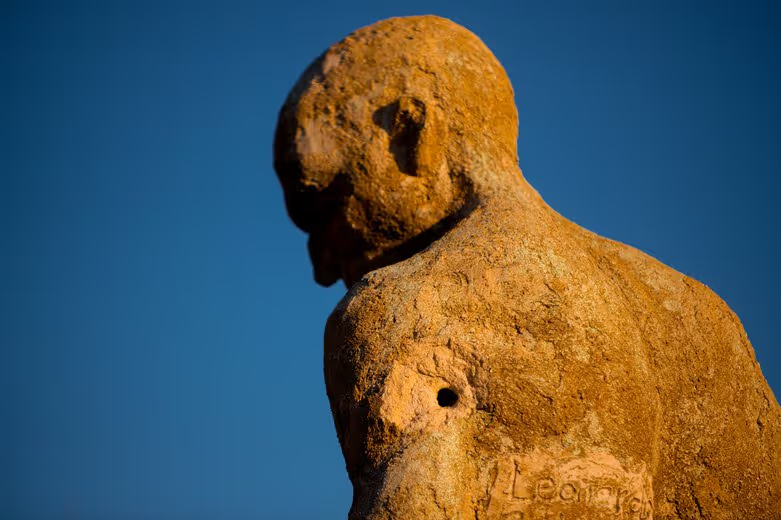
The Silence of Others: Discussion Guide
How We Started
In 2010, the story of Spain’s “stolen children” began to come out. The story of these crimes, with roots in the early days of Franco’s rule, led us to explore the marginalization and silencing of victims of many Franco-era crimes, ranging from extrajudicial killings at the end of the Spanish Civil War to torture that took place as recently as 1975. As we began to learn more, we were baffled by basic questions: how could it be that Spain, unlike other countries emerging from repressive regimes, had had no Nuremberg Trials, no Truth and Reconciliation Commission, no national reckoning? Why, instead, was a “pact of forgetting” forged in Spain? And what were the consequences of that pact, 40 years into democracy, for the still-living victims of Franco’s dictatorship? When we began filming the process of the Argentine lawsuit in 2012, which challenged this status quo, few thought that it would amount to much. But as we filmed those early meetings, we could see that the lawsuit was stirring up something vital, transforming victims and survivors into organizers and plaintiffs and bringing out dozens, and then hundreds, of testimonies from all over Spain. As the number of testimonies snowballed, the case was building into a persuasive argument about crimes against humanity that demanded international justice. We thus discovered that The Silence of Others was going to be a story about possibilities, about trying to breach a wall, and that, rather than focusing on what had happened in the past, it would be all about the present and the future. For many of the plaintiffs, the case would offer the last opportunity in their lifetimes to be heard. Yet even as we set out filming those early meetings, we could scarcely have imagined that we would follow this story for six years.
Perspective and Process
The stories that we were uncovering touched each of us deeply: Almudena is a Spaniard whose parents were raised under Franco, and who grew up in Spain during the transition from dictatorship to democracy. Robert is an American who has been involved with human rights issues since he was 19, and the fight against Fascism during the Spanish Civil War had always been close to his heart.
Point-of-View
This was a film that had to work inside and outside Spain. It needed the cultural sensitivity, the shared subconscious, and intricate contextual details of a film made by a Spaniard, and Almudena, who was born just before Franco died, returned home to Spain, after 12 years in the US, to make this film. While most of the crew was Spanish, it was also crucial that there be an international team, and Robert’s outsider perspective greatly shaped the film, unpacking assumptions and making it bigger and more universal.
As Judge María Servini says near the end of the film, “If the judges in Spain could hear what I have heard, they would open these cases here, too”. Likewise, we hope that when people hear the stories that we have heard over the seven years of making The Silence of Others, and see the fear and the pain that we have seen, they too will view this less as a political issue, and more as a human rights – or just a human – issue.
—Almudena Carracedo and Robert Bahar, Directors and Producers, The Silence of Others
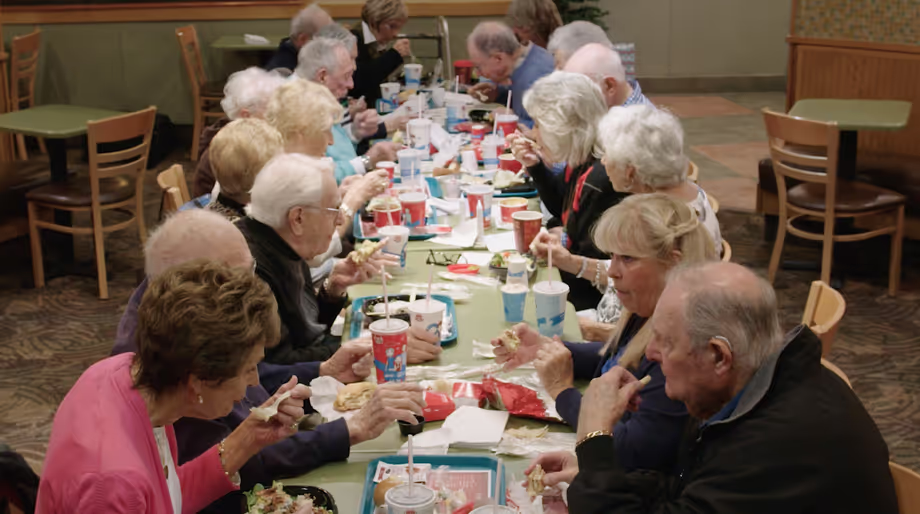
Wendy's Shabbat Delver Deeper Reading List
Friends usher in the Sabbath – called by its Hebrew name Shabbat – by candlelight, with challah bread and grape juice to complement their chicken nuggets and fries. Shabbat is typically observed at home with family, but here these seniors share in the celebration at a fast-food Wendy’s. Wendy’s Shabbat is a story of rediscovering the joys of community in older age, however unorthodox it may appear.
Durrett, Charles. The Senior Cohousing Handbook: A Community Approach to Independent Living. New Society, 2009.
Senior Cohousing is a comprehensive guide to joining or creating a cohousing project, written by the U.S. leader in the field. The author deals with all the psychological and logistical aspects of senior cohousing, and addresses common concerns, fears, and misunderstandings.
London, Charles. Far from Zion. New York: William Morrow, 2009.
London tells the stories of the Jews who stayed behind, choosing to remain in the countries of their birthAdAdult rather than immigrating to the Holy Land of Israel. At once a riveting modern history of a scattered People of the Book and London’s moving story of his own personal odyssey of religious and cultural discovery.
Parker, Priya. The Art of Gathering: How We Meet and Why It Matters. New York: Riverhead Books, 2018.
At a time when coming together is more important than ever, Parker sets forth a human-centered approach to gathering that will help everyone create meaningful, memorable experiences, large and small, for work and for play. Drawing on her expertise as a facilitator of high-powered gatherings around the world, Parker takes us inside events of all kinds to show us what works, what doesn’t, and why.
Zakutinksy, Ruth. Around Sarah’s Table: Ten Hasidic Women Share Their Stories of Life, Faith, and Tradition. New York: Free Press, 2001.
Fast paced but reverent, Around Sarah’s Table introduces us to the unique experience of living life as a Hasidic woman, and reminds us that beyond all the labels that tend to keep us apart, we are all very much alike.
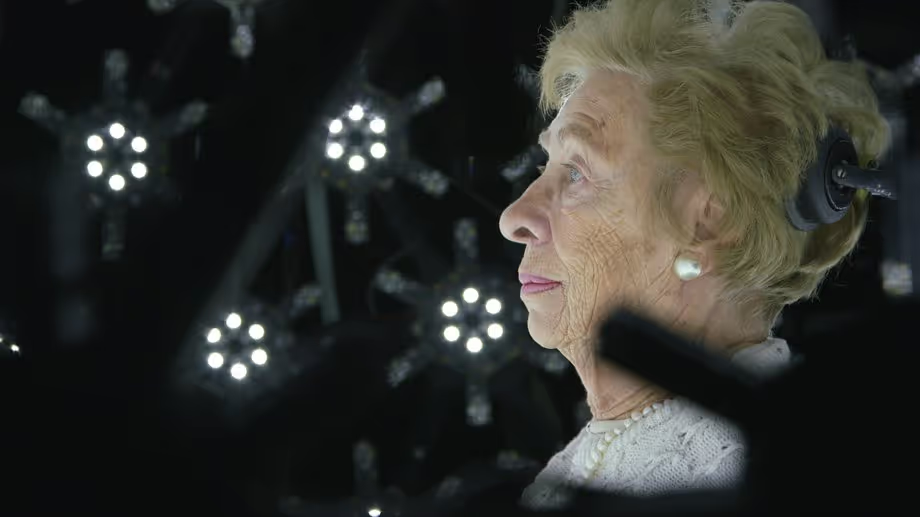
116 Candles Delver Deeper Reading List
As the Holocaust survivor community ages, the USC Shoah Foundation has embarked on an ambitious new project to transform survivors into 3D digital projections. 116 Cameras follows Eva Schloss, a survivor of Auschwitz and stepsister of Anne Frank, through her story as an interactive hologram that will have conversations with generations to come.
Frankl, Viktor Emil. Man’s Search for Meaning.Boston: Beacon Press, 2006.
Psychiatrist Viktor Frankl’s memoir has riveted generations of readers with its descriptions of life in Nazi death camps and its lessons for spiritual survival. Between 1942 and 1945 Frankl labored in four different camps, including Auschwitz, while his parents, brother, and pregnant wife perished. Based on his own experience and the experiences of those he treated in his practice, Frankl argues that we cannot avoid suffering but we can choose how to cope with it, find meaning in it, and move forward with renewed purpose.
Lanzmann, Claude. Shoah: An Oral History of the Holocaust: The Complete Text of the Film. New York: Pantheon Books, 1985.
The Nazi extermination of Jews is examined through interviews of survivors, witnesses and perpetrators and through footage of the sites of the death camps and environs as they appear today. Those interviewed include Jewish survivors of the death camps and the Warsaw ghetto uprising, Polish farmers and villagers who lived near the camps and Nazis who worked in the camps and the ghettos.
Lee, Carol Ann. The Hidden Life of Otto Frank.New York: Morrow, 2003.
In this definitive new biography, Carol Ann Lee provides the answer to one of the most heartbreaking questions of modern times: Who betrayed Anne Frank and her family to the Nazis? Probing this startling act of treachery, Lee brings to light never before documented information about Otto Frank and the individual who would claim responsibility -- revealing a terrifying relationship that lasted until the day Frank died.
Rajchman, Chil. The Last Jews of Treblinka: A Survivor’s Memory 1942-1943.New York: Pegasus Books, 2011.
Why do some live while so many others perish? Tiny children, old men, beautiful girls; in the gas chambers of Treblinka, all are equal. The Nazis kept the fires of Treblinka burning night and day, a central cog in the wheel of the Final Solution. There was no pretense of work here like in Auschwitz or Birkenau, only a train platform and a road covered with sand. A road that led only to death. But not for the author, a young man who survived working as a "barber" and "dentist," heartsick with witnessing atrocity after atrocity. Yet he managed to survive so that somehow he could tell the world what he had seen.
Yow, Valerie Raleigh. Recording Oral History: A Guide for the Humanities and Social Sciences.Lanham: Rowman & Littlefield, 2015.
Provides a comprehensive guide to oral history for researchers and students in diverse fields including history, sociology, anthropology, education, psychology, social work, and ethnographic methods. The text tackles not just the practicalities of interviewing but also the varied ethical, legal, and philosophical questions that can arise, and allows for dedicated discussion of both legalities and ethics.
Wiesel, Elie. Night. New York: Bantam Books, 1960.
It is 1944. The Jews of Sighet, Hungary are rounded up and driven into Nazi concentration camps. For the next terrible year, young Elie Wiesel experiences the loss of everything he loves --- home, friends, family --- in an agonizing journey through Birkenau, Auschwitz, Buna, and Buchenwald. The greatest tragedy of our time, told through the eyes of a 15-year old boy.

The Silence of Others Delve Deeper Reading List
The Silence of Others reveals the epic struggle of victims of Spain’s 40-year dictatorship under General Franco as they continue to seek justice four decades into democracy. Filmed over six years, the film follows the survivors organizing the groundbreaking “Argentine Lawsuit” to fight a state-imposed amnesia of crimes against humanity, where the emotional court battle uncovers a country still divided over its fascist history.
Aguilar, Paloma. Politics of Memory. Transitional Justice in Democratizing Societies. Oxford: Oxford University Press, 2001.
The book explores the important aspect of transitional politics, assessing how Portugal, Spain, the countries of Central and Eastern Europe and Germany after reunification, Russia, the Southern Cone of Latin America and Central America, as well as South Africa, have confronted legacies of repression.
Aguilar, Paloma. “The Timing and the Scope of Reparation, Truth and Justice Measures: A Comparison of the Spanish, Argentinian and Chilean Cases.” In Building a Future on Peace and Justice. Studies on Transitional Justice, Peace and Development. The Nuremberg Declaration on Peace and Justice.Ambos, Kai, Judith Large and Marieke Wierda, ed. Berlín: Springer, 2009.
This book addresses these dilemmas through a thorough overview of the current state of legal obligations; discussion of the need for a holistic approach including development; analysis of the implications of the coming into force of the ICC; and a series of "hard" case studies on internationalized and local approaches devised to navigate the tensions between peace and justice.
Encarnación, Omar G. “Justice in Times of Transition: Lessons from the Iberian Experience.” In Center for European Studies Working Paper Series, no.173, 2009.
This essay challenges this common assumption with empirical evidence from the Iberian Peninsula, where the global wave of democratization of the late twentieth century was born. In Portugal, political trials and bureaucratic purges intended to cleanse the state and society of the authoritarian past nearly derailed the transition to democracy by descending into a veritable political witch-hunt. In Spain, by contrast, forgetting and moving on prevailed, an approach that facilitated the country’s emergence as the paradigmatic example of a successful democratic transition.
Espinosa Maestre, Francisco. Shoot the Messenger?: Spanish Democracy and the Crimes of Francoism: From the Pact of Silence to the Trial of Baltasar Garzón. Translated by Richard Barker. East Sussex: Sussex Academic Press, 2013.
Judge Baltasar Garzon achieved international prestige in 1998 when he pursued the perpetrators of crimes committed in Argentina against Spanish citizens and began proceedings for the arrest of the Chilean ex-dictator Augusto Pinochet. But, when Garzon transferred his attention to his Spanish homeland, he was put on trial for opening an investigation into crimes committed by Francoists.
Faber, Sebastiaan and James D. Fernández, “The War Before the Lights Went Out: An Interview with Helen Graham.” In The Alba Volunteer. Accessed June 1, 2012
http://www.albavolunteer.org/2010/03/the-war-before-the-lights-went-out-an-interview-with-helen-graham/An interview with Helen Graham, the most prominent English-speaking historian of twentieth-century Spain.
Faber, Sebastiaan. Memory Battles of the Spanish Civil War: History, Fiction, Photography. Nashville: Vanderbilt UP, 2018.
The ability to forget the violent twentieth-century past was long seen as a virtue in Spain, even a duty. But the common wisdom has shifted as increasing numbers of Spaniards want to know what happened, who suffered, and who is to blame. Memory Battles of the Spanish Civil War shows how historiography, fiction, and photography have shaped our views of the 1936-39 war and its long, painful aftermath.
Faber, Sebastiaan & Bécquer Seguín, “Spaniards Confront the Legacy of Civil War and Dictatorship.” The Nation 18 July 2016.
Four decades after the transition to democracy, families victimized by Francoist repression have organized in a quest for justice.
FERRÁNDIZ, Francisco. Unburials, Generals, and Phantom Militarism:
Engaging with the Spanish Civil War Legacy. 2019.
This paper is based on a 16-year-long ethnography of mass grave exhumations in contemporary Spain and deals with the tortuous, painful, much-disputed, and incomplete unmaking of a concrete and massive militaristic inscription of Spain: that related to its last internal war (1936–1939) and subsequent dictatorship (1939–1975).
Graham, Helen. The Spanish Civil War. A Very Short Introduction. Oxford: Oxford University Press, 2005.
Amid the many catastrophes of the twentieth century, the Spanish Civil War continues to exert a particular fascination among history buffs and the lay reader alike. This Very Short Introduction integrates the political, social and cultural history of the Spanish Civil War.
Graham, Helen. The War and Its Shadow: Spain's Civil War in Europe's Long Twentieth Century. East Sussex: Sussex Press, 2014, Kindle Edition.
In Spain today, its civil war remains 'the past that will not pass away.' The long shadow of World War II also brings back to central focus its most disquieting aspects, revealing to a broader public the stark truth already known by specialist historians - that in Spain, as in the many other internecine wars that would soon convulse Europe, war was waged predominantly upon civilians: millions were killed, not by invaders and strangers, but by their own compatriots, including their own neighbors.
Graham, Helen. “After the Fear Was Over? What Came After Dictatorships in Spain, Greece and Portugal.” In The Oxford Handbook of Postwar European History, Stone, Dan ed. London: Oxford University Press, 2012.
What Spain, Greece, and Portugal have in common in the twentieth century is the manner in which their internal processes of change – rural to urban, agrarian to industrial – were intervened in and inflected at crucial moments and with enduring effect by the force of international political agendas.
Hooper, John. The New Spaniards. London: Penguin, 2006.
The restoration of democracy in 1977 heralded a period of intense change that continues today. Spain has become a land of extraordinary paradoxes in which traditional attitudes and contemporary preoccupations exist side by side. Focusing on issues which affect ordinary Spaniards, from housing to gambling, from changing sexual mores to rising crime rates. John Hooper's fascinating study brings to life the new Spain of the twenty-first century.
Kaufman, Dan. 2011. “A Secret Archive: On the Mexican Suitcase.” The Nation 24 Jan.
http://www.thenation.com/article/secret-archive-mexican-suitcase/The 4,500 images in the recently discovered Mexican Suitcase deepen our understanding of photojournalism as well as the complexities of the Spanish Civil War.
Payne Stanley G., and Jesús Palacios. Franco: A Personal and Political Biography. University of Wisconsin Press, 2018.
Franco: A Personal and Political Biography depicts his early life, explains his career and rise to prominence as an army officer who became Europe’s youngest interwar brigadier general in 1926, and then discusses his role in the affairs of the troubled Second Spanish Republic (1931–36). The authors examine in detail how Franco became dictator and how his leadership led to victory in the Spanish Civil War that consolidated his regime. They also explore Franco’s role in the great repression that accompanied the Civil War—resulting in tens of thousands of executions—and examine at length his controversial role in World War II. This masterful biography highlights Franco’s metamorphoses and adaptations to retain power as politics, culture, and economics shifted in the four decades of his dictatorship.
Paul Preston is the world's foremost historian on twentieth-century Spain. A professor at the London School of Economics, he lives in London. His major works include the three following titles.
Preston, Paul. Franco: A Biography. BasicBooks, 1994.
Preston’s book is considered a definitive biography of the Spanish military leader whose authoritarian rule extended from the end of the Spanish Civil War in 1939 to his death in 1975.
Preston, Paul.The Spanish Holocaust: Inquisition and Extermination in Twentieth-Century Spain. London: Harper Collins, 2012.
Evoking such classics as Anne Applebaum’s Gulag and Robert Conquest’s The Great Terror, The Spanish Holocaust sheds light on one of the darkest and most unexamined eras of modern European history. As Spain finally reclaims its historical memory, a full picture can now be drawn of the atrocities of Franco’s Spain―from torture and judicial murders to the abuse of women and children. Paul Preston provides an unforgettable account of the systematic terror carried out by Spain’s fascist government.
Resina, Joan Ramon, ed. Disremembering the Dictatorship: The Politics of Memory since the Spanish Transition to Democracy. Amsterdam: Rodopi, 2000.
Most accounts of the Spanish transition to democracy have been celebratory exercises at the service of a stabilizing rather than a critical project of far-reaching reform.
Roht-Arriaza, Naomi. The Pinochet Effect. Philadelphia: University of Pennsylvania Press, 2006.
The 1998 arrest of General Augusto Pinochet in London and subsequent extradition proceedings sent an electrifying wave through the international community. This legal precedent for bringing a former head of state to trial outside his home country signaled that neither the immunity of a former head of state nor legal amnesties at home could shield participants in the crimes of military governments
The Spanish Civil War: Reaction, Revolution, and Revenge.W. W. Norton & Company, 2007.
This surging history recounts the struggles of the 1936 war in which more than 3,000 Americans took up arms. Tracking the emergence of Francisco Franco's brutal (and, ultimately, extraordinarily durable) fascist dictatorship, Preston assesses the ways in which the Spanish Civil War presaged the Second World War that ensued so rapidly after it.
The attempted social revolution in Spain awakened progressive hopes during the Depression, but the conflict quickly escalated into a new and horrific form of warfare. As Preston shows, the unprecedented levels of brutality were burned into the American consciousness as never before by the revolutionary war reporting of Ernest Hemingway, John Dos Passos, Herbert Matthews, Vincent Sheean, Louis Fischer, and many others. Completely revised, including previously unseen material on Franco's treatment of women in wartime prisons, The Spanish Civil War is a classic work on this pivotal epoch.
The Triumph of Democracy in Spain. Methuen, 1986.
The Triumph of Democracy in Spain tells a gripping story of the tortuous creation of Spain's constitutional monarchy. The book provides an authoritative account of the tribulations of the forces of progress, beginning in 1969 with the disintegration of Franco's dictatorship and ending with the remarkable Socialist election victory in 1982.
Shulman, Aaron. The Age of Disenchantments: The Epic Story of Spain's Most Notorious Literary Family and the Long Shadow of the Spanish Civil War. HarperCollins, 2019.
A gripping narrative history of Spain’s most brilliant and troubled literary family—a tale about the making of art, myth, and legacy—set against the upheaval of the Spanish Civil War and beyond In this absorbing and atmospheric historical narrative, journalist Aaron Shulman takes us deeply into the circumstances surrounding the Spanish Civil War through the lives, loves, and poetry of the Paneros, Spain’s most compelling and eccentric family, whose lives intersected memorably with many of the most storied figures in the art, literature, and politics of the time—from Neruda to Salvador Dalí, from Ava Gardner to Pablo Picasso to Roberto Bolaño.
Tusell, Javier. Spain: From Dictatorship to Democracy. Wiley, 2007.
This comprehensive survey of Spain’s history looks at the major political, social, and economic changes that took place from the end of the Civil War to the beginning of the twenty-first century.
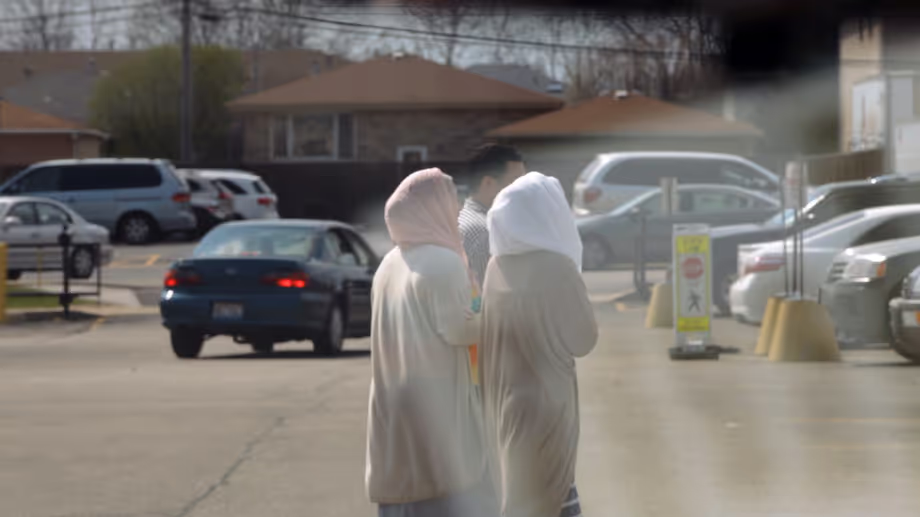
The Feeling of Being Watched: Discussion Guide
This guide is an invitation to dialogue. It is based on a belief in the power of human connection and designed for people who want to use The Feeling of Being Watched to engage family, friends, classmates, colleagues and communities. In contrast to initiatives that foster debates in which participants try to convince others that they are right, this document envisions conversations undertaken in a spirit of openness in which people try to understand one another and expand their thinking by sharing viewpoints and listening actively.
The discussion prompts are intentionally crafted to help a wide range of audiences think more deeply about the issues in the film. Rather than attempting to address them all, choose one or two that best meet your needs and interests. And be sure to leave time to consider taking action. Planning next steps can help people leave the room feeling energized and optimistic, even in instances when conversations have been difficult.
For more detailed event planning and facilitation tips, visit www.pbs.org/pov/engage/.
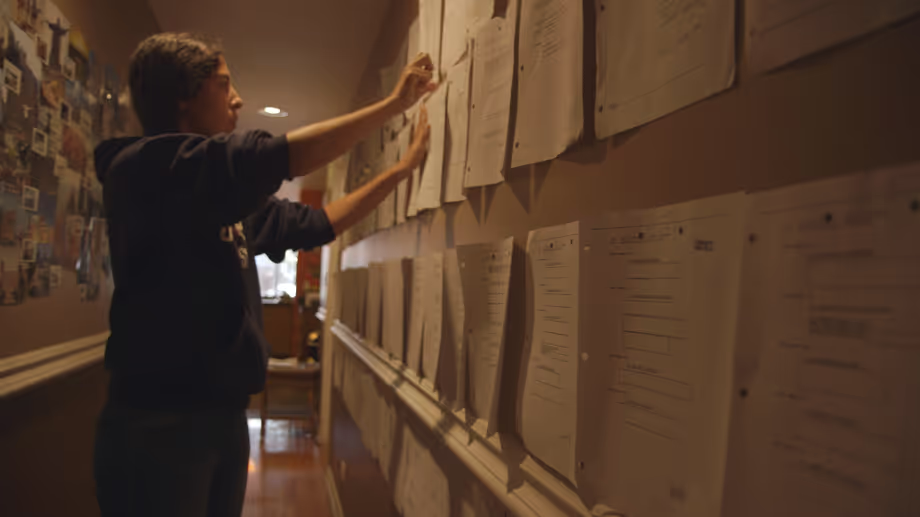
The Feeling of Being Watched: Community Screening Healing Guide
"But what are the feds looking for, and after years of seemingly fruitless surveillance, how is their continued scrutiny and racial targeting justified? Equal parts angry and anxious, Boundaoui’s smart, unsettling documentary functions both as a real-world conspiracy thriller and a personal reflection on the psychological strain of being made to feel an outsider in one’s own home."
-Guy Lodge | Variety
In film screenings across the country, community members have expressed experiencing a wide range of emotions as they bore witness to filmmaker’s Assia Boundaoui’s journey to uncover one of the largest counter terrorism investigations ever conducted in the U.S. before 9/11, code-named “Operation Vulgar Betrayal.” Community members have described feeling “scared, proud, angry, confused, surprised, discouraged, frustrated, sad, proud and grateful.”
There is no doubt that wide-spread government surveillance of Muslims in the U.S. has caused profound collective trauma. However, we often talk about surveillance in a legal or civil rights framework. Yet, secrecy and unchecked surveillance are eroding the health and stability of Muslim communities across the U.S. and we simply aren't talking enough about it. This guide is intended to help impacted communities began an open dialogue about the psychological impact of racism, discrimination, profiling and surveillance. As community members, organizers, student leaders and activists across the country we can change the narrative of fear that has plagued our neighborhoods for far too long. Together, we can use the film as a catalyst to create safe spaces that allow our communities to come together, discuss the impact of surveillance on our lives, build power, and heal.
This guide is intended to help facilitate these long overdue and critical conversations within the Muslim and Muslim-American community. This is not a time for debate, but of reflection and dialogue. It is a time to identify the ways in which we have been traumatized and together begin a journey to process these troubling experiences.
There are three ways to utilize the resources included in this guide:
- Before watching the film: take time to process the possible triggers you may feel and prepare for the film prior to watching it. In anticipation, we gathered several resources you can draw on during this period of processing.
- During the film: take time throughout the film to evaluate your pulse. Breath in, check in and check out, if necessary. If you feel the need to stop watching the film, jump right into page 5 of the guide.
- After the film: once you are feeling activated, the guide contains three questions you can answer in a group setting.
The information is a helpful roadmap for a generative conversation to guide the group through a process of collective healing. All should be empowered to utilize these guiding questions as needed, or create new questions together. In order to engage openly with members of the community, all should feel welcome to supplement this guide with relevant and helpful tools.
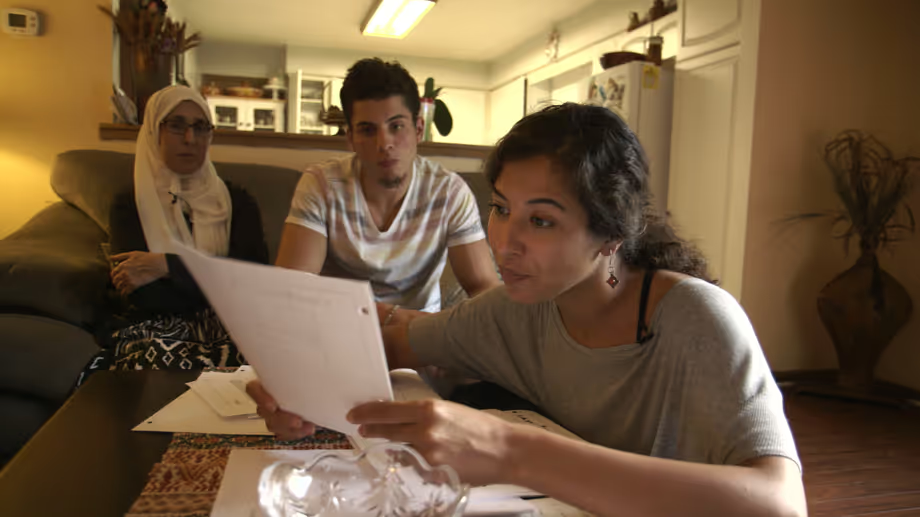
The Feeling of Being Watched: Assia's Reading List
NON-FICTION
This Muslim American Life: Dispatches from the War on Terror by Moustafa Bayoumi
Dark Matters: On the Surveillance of Blackness by Simone Browne
The Autobiography of Malcolm X by Alex Haley
The Price of Fear: The Truth Behind the Financial War on Terror by Ibrahim Warde
Muslim Cool by Su'ad Abdul Khabeer
When They Call You a Terrorist: A Black Lives Matter Memoir by Patrisse Cullors
Islamophobia and the Politics of Empire by Deepa Kumar
The Right To Look: A Counter-History of Visuality by Nicholas Mirzoeff
Emergent Strategy by Adrienne Maree Brown
Agents of Repression: The FBI's Secret War Against the Black Panther Party by Ward Churchill and Jim Vander Wall
American Islamophobia by Khaled A. Beydoun
The Souls of Black Folk by W.E.B. Dubois
Orientalism by Edward Said
FICTION
Exit West by Mohsin Hamid
The Other Americans by Laila Lalami
1984 by George Orwell
The Book of Unknown Americans by Cristina Henriquez
Snow Falling on Cedars by David Guterson
Invisible Man by Ralph Ellison
The Queue by Basma Abdel Aziz
The Refugees Viet Thanh Nguyen
A Map of Home by Randa Jarrar
Arab in America by Toufic El Rassi
POETRY
Halal If You Hear Me by Fatima Asghar & Safia Elhillo
YOUTH
The War Outside by Monica Hesse
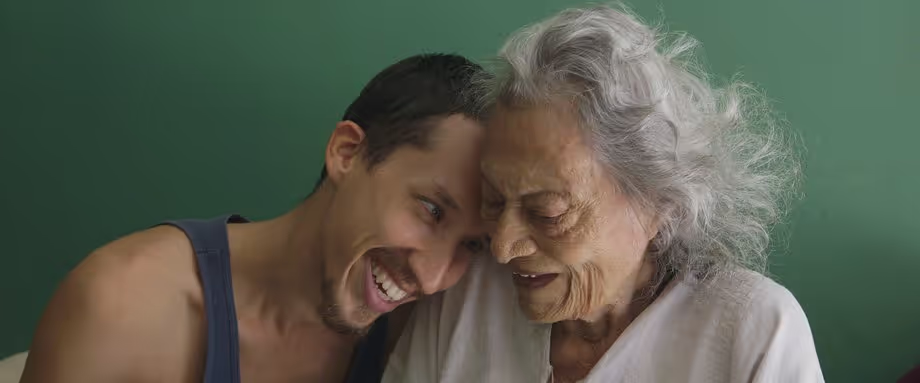
Family and Caregiving: The Challenge of Caring for Our Elders
When Diego and his two brothers are brought together to care for their charismatic 93-year-old grandmother, América, they confront the transition from carefree adolescence to adult responsibilities in the documentary América from directors Erick Stoll and Chase Whiteside.
Diego is a young circus artist living away from his family in a tourist-filled beach city when he must return home suddenly—his grandmother fell from her bed, and as a result his father was jailed for elder neglect. Diego sees poetry and purpose in this tragedy. He believes that América, despite her immobility and advanced dementia, fell on purpose to bring the separated family back together. He reunites with his estranged brothers and leaves his old life behind.
Now Diego and his brothers face new challenges: freeing their father from an opaque court system while learning to care for América. Yet the greatest challenge might be learning to work together. As the brothers clash over money and the distribution of labor, difficult questions emerge: who decides what becomes of América, and how long will they put their lives on hold to care for her?
Learn more about América and explore additional resources about the film and filmmakers at: https://www.pbs.org/pov/america/
AUDIENCE
Family Caregivers
Senior Care Students and Professionals

América: Discussion Guide
We didn’t set out to make América, or even go looking for a story like it.
Rather, it was born out of a chance meeting.We were working in Puerto Vallarta on a different project that was going nowhere fast when we met Diego at a mutual friend’s birthday party. As anyone who has met him can attest, his small frame belies his outsized and gregarious personality. He regaled us with stories about his work as a circus artist and his love for Alejandro Jodorowsky. He ended up crashing with us that night.
It was the first of many such nights. As we slinked around Vallarta for a few more months, trying to make something of our other project, Diego was our constant companion. And when one day he announced that he had to return home to Colima to care for his grandmother, we followed him not as a subject but as a friend.
There we met América for the first time and were taken by the secret language Diego seemed to share with her. Though at that point it wasn’t clear where their story was headed, or that there was a story at all, we immediately felt their dynamic was more compelling than whatever else we were working on. With our friendship with Diego as the foundation, we ended up following the family for the next three years, with Erick intermittently living with them to film.
To be sure, it wasn’t hard to be intrigued by Diego and his brothers—this hangout crew of artists who juggled circus, marijuana and a search for deeper meaning alongside the responsibilities of adulthood. They were our fellow creatives and age peers. Like them, we also had aging family members, some with the early, devastating flashes of dementia. Unlike them, we were far from home. To see other young men at similar points in their lives commit themselves full-time to caregiving was inspiring.
Still, the situation presented entirely new challenges for us as filmmakers. Though more people are living with dementia than ever before, their stories remain underrepresented on screen, in part because they are difficult stories to tell, perhaps especially for documentarians. A common misconception is that those with dementia cease to be themselves as they lose their memory. Though for us, as for Diego, América's personhood was never in question, in place of one-time consent to a long-term project, we sought to renew participation with her each time we filmed.
It was also important for us to remain alert to América’s desires and needs when filming. On the rare occasion that she seemed bothered by the camera, we stopped. Then in editing, we had to determine what was essential to portray honestly the immense physical and emotional demands of care, whilst respecting her dignity and privacy. This determination wasn’t always easy, and ultimately audiences will decide whether they think we got it right.
Throughout the process, we were guided by Diego’s examples—for him, América’s vulnerability and dependence never negated her humanity. Beyond the confines of dementia, every day presented new opportunities for joy, laughter, beauty and love. In this spirit, we wanted the film to emphasize all that América had to give, rather than what she required.
Nearly everyone deals with a care situation at some point in their lives—whether it be for a parent, grandparent, other family member or themselves. But few will be celebrated in a documentary film for their efforts. Though the brothers deserve enormous credit for the energy and tenderness they brought to América, there are countless millions whose work as caregivers goes unseen and undervalued.
Indeed, it’s hard to imagine work more essential to human life than caregiving, and yet this labor is commonly unpaid or underpaid. It is also work typically performed by women, especially immigrant women and women of color, who are sometimes imagined to be “natural” caregivers. We reject this sexist, racist premise! The brothers demonstrate that anyone—even twenty-something circus artists—can find value and dignity in care work.
The question is whether society can reflect that value. The fall of real wages in recent decades has made it difficult to support a family on a single income, forcing traditional caregivers to seek work outside the home. Family and friends who step in sacrifice their own wellbeing to do so, and paid caregivers toil for low wages without basic workplace protections. As can be seen in the film, care work is real work, it’s hard work and it deserves the same social recognition and entitlements afforded to other types of labor.
But rather than meet the growing need for care with greater assistance for families and care workers, governments have enacted steep cutbacks in public services. Today, high quality care is available only to those who can afford to pay for it, and vulnerable populations are left with few options.
We believe everyone is entitled to high-quality care, regardless of income, and we stand with the movements of care workers, mothers, elderly people and people with disabilities fighting for universal and comprehensive care coverage that expands options for people needing care and their families and provides a living wage for care workers.
América is the story of three brothers who come together to care for their grandmother. Though in its domestic intimacy it may seem far removed from the politics of care, it was a yawning lack of social support that brought them together in the first place, and that also birthed the stressors that tore them apart. As viewers watch Diego and his brothers struggle to give the best care possible to América, we hope they will be inspired to imagine a society that regards caregiving as the essential life-giving work that it is.
—Erick Stoll and Chase Whiteside, Filmmakers, América
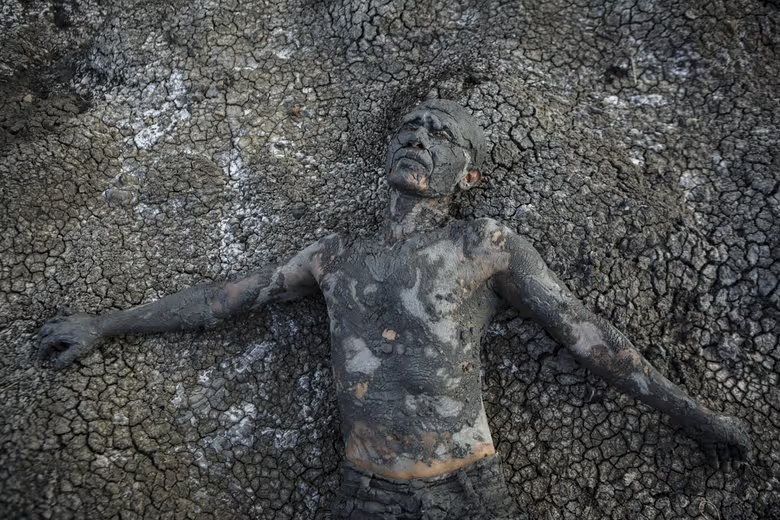
Grit: Discussion Guide
CYNTHIA: I was in Indonesia in 2012 and someone there said to me, “If you want to consider a new topic for a documentary, you should look into the mudflow.” I thought, what? I’d never heard of the disaster before. I visited the mud site for three days and conducted initial interviews on film and gathered enough material to make a three-minute film teaser.
It took a year to put the crew in place and to find my co-director, Sasha Friedlander, who grew up partially in Indonesia, worked as a journalist there, and is fluent in Bahasa. Then it was another five years of fundraising and production. We worked with both an Indonesian and a U.S. crew.
SASHA: I lived in Indonesia between 2007 and 2009, working for the Bali Post as a journalist and translator. During that time I’d covered the devastating story of the Lapindo mudflow in East Java, and I remember feeling moved and inspired by the protests mounting against the gas drilling company. Because the owner of that company was a key political figure in Indonesia, the government heavily censored the stories that were coming out in the news, so the coverage never left the archipelago.
When I received an email from Cynthia in May 2013 about the possibility of collaborating on a film about the mudflow, it was the first time I’d heard the story mentioned since I left Indonesia in 2009. I knew that there was a presidential election coming up in 2014. That offered a glimmer of hope for the mudflow victims, who were still waiting for their reparations from the drilling company. I was excited to get back to Indonesia and learn more about the situation through the lens of the activists. Cynthia and I hoped to make a film that would resonate with a Western audience. During the six years that we were filming Grit, we could never have imagined how many parallels would emerge between this story in East Java and the issues here in the United States.
Our hope is that audiences will leave the theater with a better understanding of the world’s largest Muslim country. We want people to think about the urgency for political engagement, the importance of women in leadership roles, and the power of art and perseverance in social and environmental struggles. It’s hopeful that we’re seeing young people stepping up and demanding change worldwide. After watching this story unfold, we hope audiences are inspired to cultivate their own determination, their own grit.
—Cynthia Wade and Sasha Friedlander, Directors, Grit

The Ethics of Recovery: What Happens After an Industrial Disaster?
Industrial accidents are a fact of life in the modern world. Oil spills, chemical explosions, leaks of toxic waste, and other disasters can devastate individual lives and communities for generations. The lesson uses an Indonesian drilling explosion documented in the film, Grit, to explore what ethical and equitable recovery from such disasters might look like. Students will use role play and group discussion to explore how stakeholders can increase understanding and come to consensus about steps required to make everyone whole. The lesson can be adapted to focus on business ethics, safe science and engineering practices, government regulations and responsibility, civic engagement, or all of these.
OBJECTIVES
In this lesson, students will:
Learn about Indonesia and a devastating drilling accident that occurred in 2006 with effects ongoing
Use discussion and role play to consider how emotional reactions and differences in goals can effect long-term response to and recovery from industrial disasters
Practice perspective-taking (standing in someone else’s shoes)
Create a reflection on what they’ve learned, either in writing, art, or a multimedia project
GRADE LEVELS: 11-12
Subject Areas
Civics / Government
Global Studies
Business
Earth Science
Ecology / Environmental Science
Ethics
Research Skills
English/Language Arts
MATERIALS
Film Clips and a way to screen them; Internet connection; a way for students to share lists
ESTIMATED TIME NEEDED
90 minutes plus homework
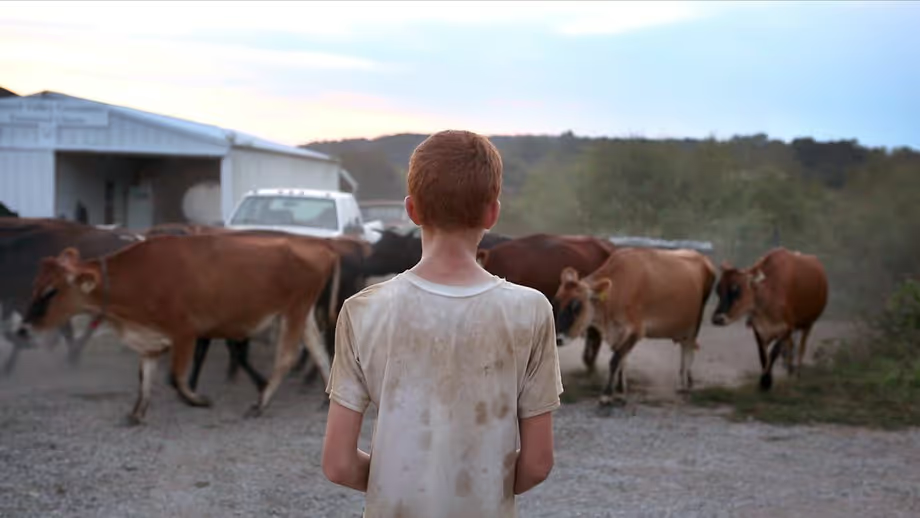
Farmsteaders: The New Generation of Family Farming
In a once-thriving farm community, Nick Nolan, his wife Celeste, and their young family are on a journey to resurrect his grandfather's dairy farm. Farmsteaders takes place in the rolling foothills of Ohio, just a few miles north of the Ohio River, where, like countless other places in rural America, a once thriving agriculture economy has given way to the pressures of agribusiness and corporate farming. Fertile farmland is unused, barns are falling over, health issues are skyrocketing.
Farmsteaders points an honest and tender lens at everyday life in rural America, offering an unexpected voice for a forsaken people: those who grow the food that sustains us.
Learn more about Farmsteaders and explore additional resources about the film and filmmakers at: https://www.pbs.org/pov/farmsteaders/
AUDIENCE
- Middle and High School Afterschool Programs
- College Agricultural Programs
- Community Gardens
